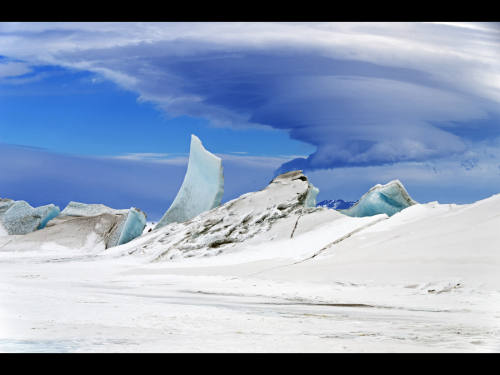NASA image: Wonders in the Antarctic sky

In 43 hours across five science flights in late November 2013, NASA's P-3 research aircraft collected more than 20,000 kilometers (12,000 miles) worth of science data. Instruments gathered information about the thickness of the ice over subglacial lakes, mountains, coasts, and frozen seas. The flights over Antarctica were part of Operation IceBridge, a multi-year mission to monitor conditions in Antarctica and the Arctic until a new ice-monitoring satellite, ICESat-2, launches in 2016.
Laser altimeter and radar data are the primary products of the mission, but IceBridge project scientist Michael Studinger almost always has his digital camera ready as well. On Nov. 24, 2013, he took this photograph of a multi-layered lenticular cloud hovering near Mount Discovery, a volcano about 70 kilometers (44 miles) southwest of McMurdo Station on Antarctica's Ross Island.
Lenticular clouds are a type of wave cloud. They usually form when a layer of air near the surface encounters a topographic barrier, gets pushed upward, and flows over it as a series of atmospheric gravity waves. Lenticular clouds form at the crest of the waves, where the air is coolest and water vapor is most likely to condense into cloud droplets. The bulging sea ice in the foreground is a pressure ridge, which formed when separate ice floes collided and piled up on each other.
Provided by NASA


















